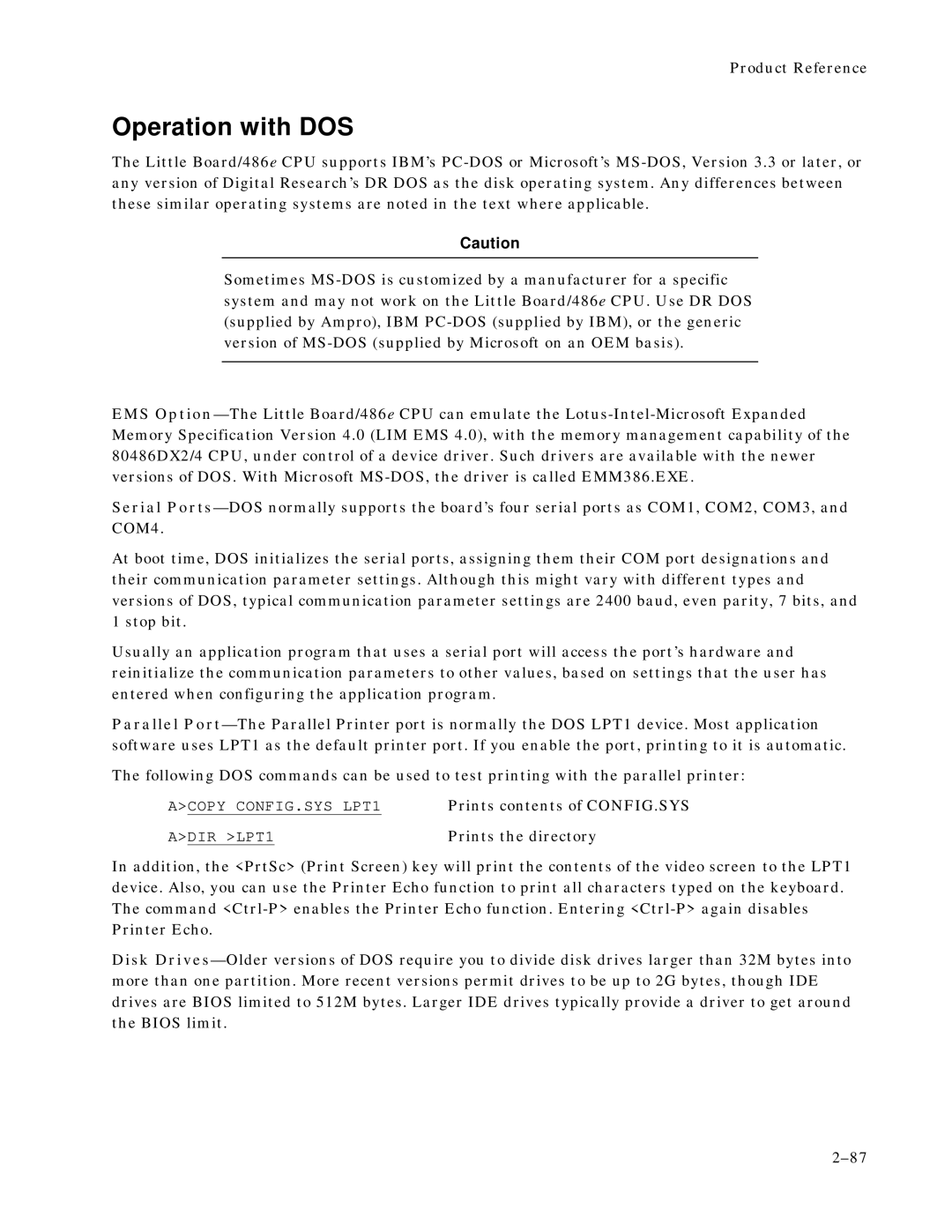Product Reference
Operation with DOS
The Little Board/486e CPU supports IBM’s PC-DOS or Microsoft’s MS-DOS, Version 3.3 or later, or any version of Digital Research’s DR DOS as the disk operating system. Any differences between these similar operating systems are noted in the text where applicable.
Caution
Sometimes MS-DOS is customized by a manufacturer for a specific system and may not work on the Little Board/486e CPU. Use DR DOS (supplied by Ampro), IBM PC-DOS (supplied by IBM), or the generic version of MS-DOS (supplied by Microsoft on an OEM basis).
EMS Option—The Little Board/486e CPU can emulate the Lotus-Intel-Microsoft Expanded Memory Specification Version 4.0 (LIM EMS 4.0), with the memory management capability of the 80486DX2/4 CPU, under control of a device driver. Such drivers are available with the newer versions of DOS. With Microsoft MS-DOS, the driver is called EMM386.EXE.
Serial Ports—DOS normally supports the board’s four serial ports as COM1, COM2, COM3, and COM4.
At boot time, DOS initializes the serial ports, assigning them their COM port designations and their communication parameter settings. Although this might vary with different types and versions of DOS, typical communication parameter settings are 2400 baud, even parity, 7 bits, and 1 stop bit.
Usually an application program that uses a serial port will access the port’s hardware and reinitialize the communication parameters to other values, based on settings that the user has entered when configuring the application program.
Parallel Port—The Parallel Printer port is normally the DOS LPT1 device. Most application software uses LPT1 as the default printer port. If you enable the port, printing to it is automatic.
The following DOS commands can be used to test printing with the parallel printer:
A>COPY CONFIG.SYS LPT1 | Prints contents of CONFIG.SYS |
A>DIR >LPT1 | Prints the directory |
In addition, the <PrtSc> (Print Screen) key will print the contents of the video screen to the LPT1 device. Also, you can use the Printer Echo function to print all characters typed on the keyboard. The command <Ctrl-P> enables the Printer Echo function. Entering <Ctrl-P> again disables Printer Echo.
Disk Drives—Older versions of DOS require you to divide disk drives larger than 32M bytes into more than one partition. More recent versions permit drives to be up to 2G bytes, though IDE drives are BIOS limited to 512M bytes. Larger IDE drives typically provide a driver to get around the BIOS limit.

